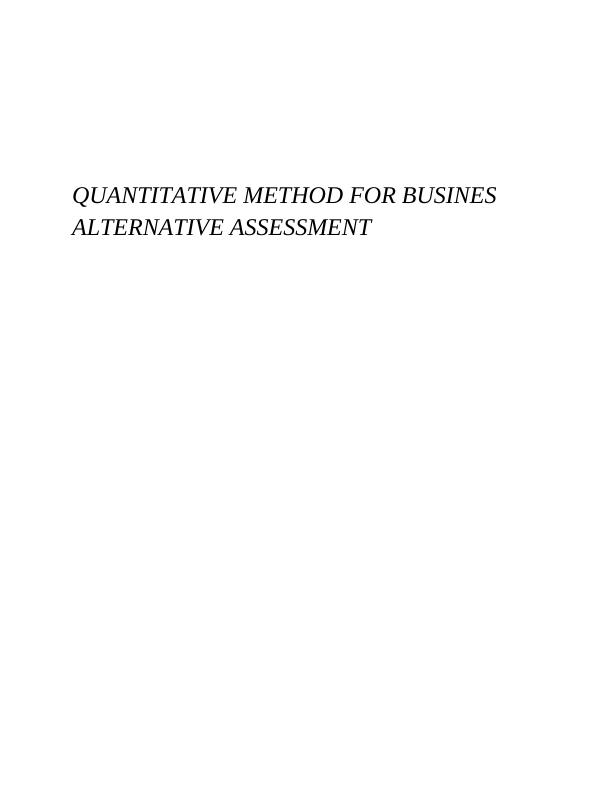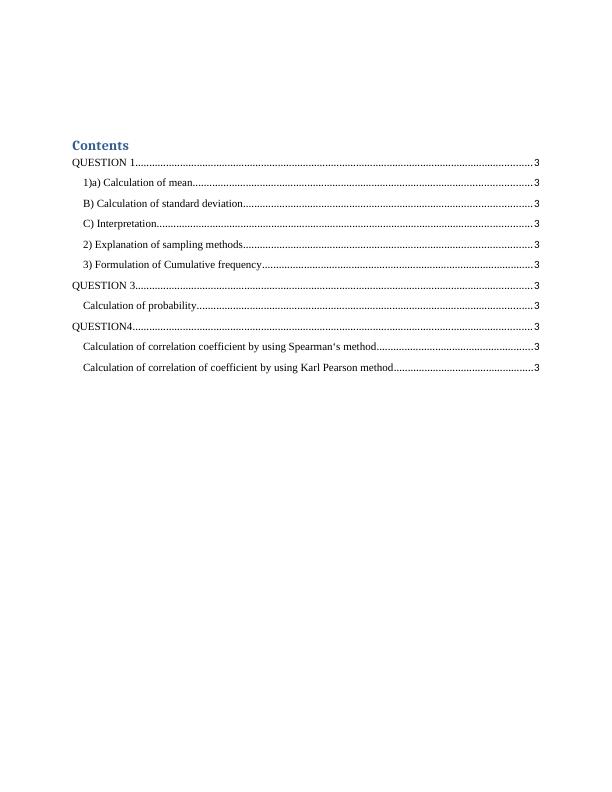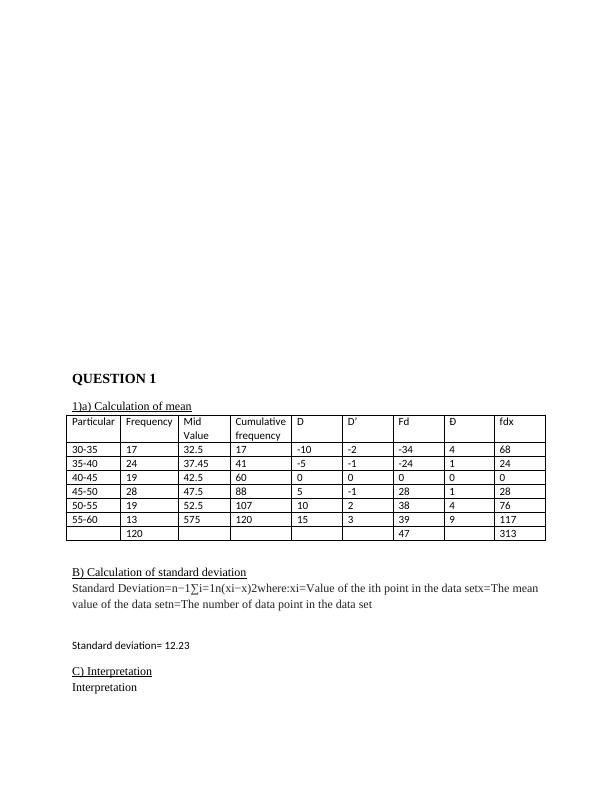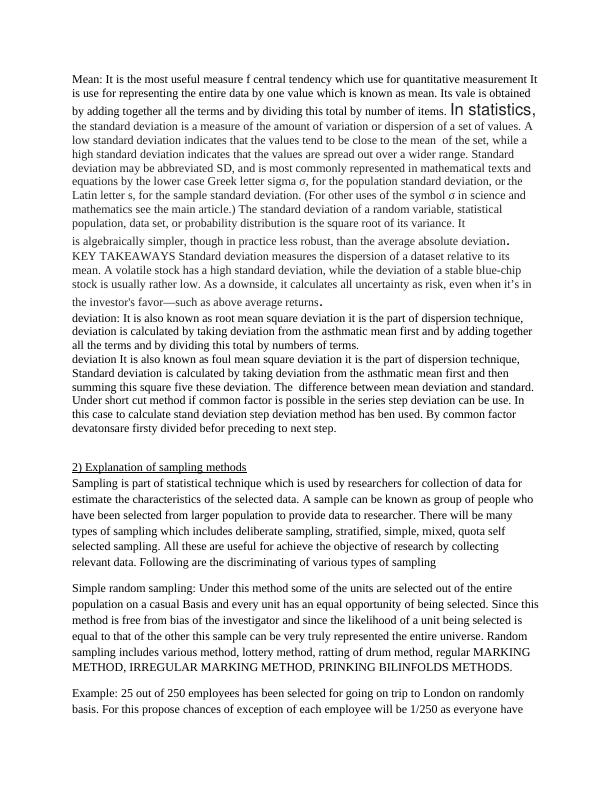Quantitative Method for Business - Alternative Assessment
This is an individual assignment for the course UGB 108 Quantitative Methods for Business. The assignment requires students to answer 3 out of 5 questions in a report format. The assignment must be submitted through Turnitin on Canvas and JIRA.
11 Pages3391 Words73 Views
Added on 2023-01-12
About This Document
This study material covers topics such as calculation of mean, standard deviation, interpretation, sampling methods, cumulative frequency, probability, and correlation coefficient in quantitative methods for business. It also includes an alternative assessment for understanding the concepts better.
Quantitative Method for Business - Alternative Assessment
This is an individual assignment for the course UGB 108 Quantitative Methods for Business. The assignment requires students to answer 3 out of 5 questions in a report format. The assignment must be submitted through Turnitin on Canvas and JIRA.
Added on 2023-01-12
ShareRelated Documents
End of preview
Want to access all the pages? Upload your documents or become a member.
Quantitative Methods for Business
|12
|2635
|69
Quantitative Methods for Business Alternative
|9
|1606
|56
Quantitative Methods for Business
|12
|2291
|91
Business Decision Making
|7
|894
|63
Quantitative Methods for Business
|15
|4420
|66
Quantitative Methods for Business
|11
|2263
|2




